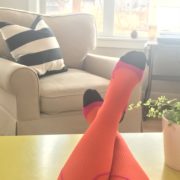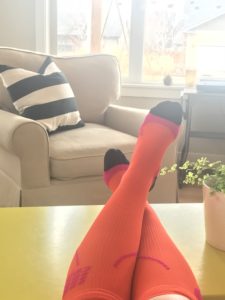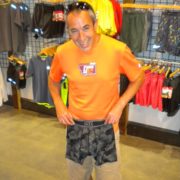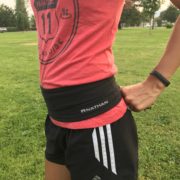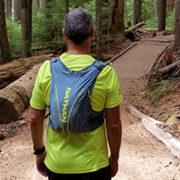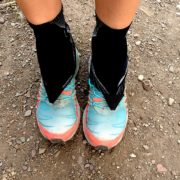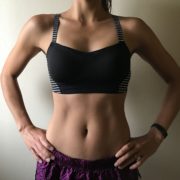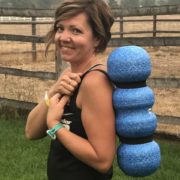Angie Partain is very involved in the Missoula Running Community as both a runner and frequent volunteer despite being a busy mom. You can follow her adventures at @jnapartain.
Compression is common word in the running world, you hear it often when talking about recovery and injury prevention. But I must confess: outside of an occasional taping from my PT, I haven’t done much “compressing”….or really even known how to. I’ve often wondered about compression socks or sleeves, so when Runner’s Edge asked me to try out a pair of CEP Compression Run Socks, I was excited to give them a try and see what, if any, benefits I felt from wearing them.
We’re all familiar with the recovery acronym RICE: Rest, Ice, Compression, and Elevation. Rest is pretty straightforward, even though it’s probably the hardest part. Ice and Elevation are also fairly straightforward and a little easier to do—think guilt-free couch and TV time. But Compression…it just sounds intimidating–and technical. But now, it’s as simple as slipping on a pair of knee-high socks…
The Fit
Compression socks are going to be tight—that’s the whole point. A quick measuring of your calf will get you fitted to the correct size for you. Getting into them the first time or two was a bit of a tricky business, but now I can do it without much thought. Early on I found that I could only do about 20-30 minutes at a time, but now I can wear them for longer stretches—and I really love the way they feel. When I wore them on a long run, I completely forgot I was even wearing them—I also found that my lower legs actually felt less fatigued. The additional padding in the heel felt great and the seamless toe adds to the comfort level of these socks.
The Look
These are not your Grandma’s compression socks. CEP has done a great job of designing compression that is fashionable. They come in an array of colors for men as well as women—I chose the orange/hot pink…I’m loving their spunky vibe!
The Purpose
The biggest benefit that I saw from “compressing” was the increased rate of recovery–muscle soreness diminished quicker when worn post workout. I also found that wearing them while running added support that I felt would prove to be very beneficial, especially if dealing with shin splints. My achilles flared up a few months ago and I found compression paired with a rest day has worked to calm this down. I also have an ankle that likes to swell up after long workouts, hours on my feet or even while traveling. I’m finding that a big benefit of compression is improved circulation, which is helping to alleviate this type of swelling.
 On the technical side, these are “Progressive Compression” as well as “Consistent”. What does that mean? It takes specific rates of pressure to qualify as medical grade, in this case: 20-30 mmHg (millimeter of Mercury–stretching way beyond my paygrade here) units of pressure. Progressive compression means the pressure ‘progresses’ from a higher pressure (at the ankle) to a lower pressure (at the calf). Consistent means it delivers the same rate of pressure to an area, in this case the the entire calf. This all works together increasing circulation, stabilizing ligaments and tendons while reducing muscle vibration.
On the technical side, these are “Progressive Compression” as well as “Consistent”. What does that mean? It takes specific rates of pressure to qualify as medical grade, in this case: 20-30 mmHg (millimeter of Mercury–stretching way beyond my paygrade here) units of pressure. Progressive compression means the pressure ‘progresses’ from a higher pressure (at the ankle) to a lower pressure (at the calf). Consistent means it delivers the same rate of pressure to an area, in this case the the entire calf. This all works together increasing circulation, stabilizing ligaments and tendons while reducing muscle vibration.
In Short
I found the CEP Compression Run Socks to be a great addition to my running and recovery regime. After just completing a year long endurance goal, my legs and feet were feeling a bit chewed up. I’m happy to report they are feeling happy and healthy again! It’s so good to be reminded of the importance of recovery and injury prevention from time to time. Both are so crucial to healthy and happy running. Maybe it’s time for you to check in with your recovery strategies. If you want to move into the world of compression, check out what’s available at the Runner’s Edge!
-Angie

